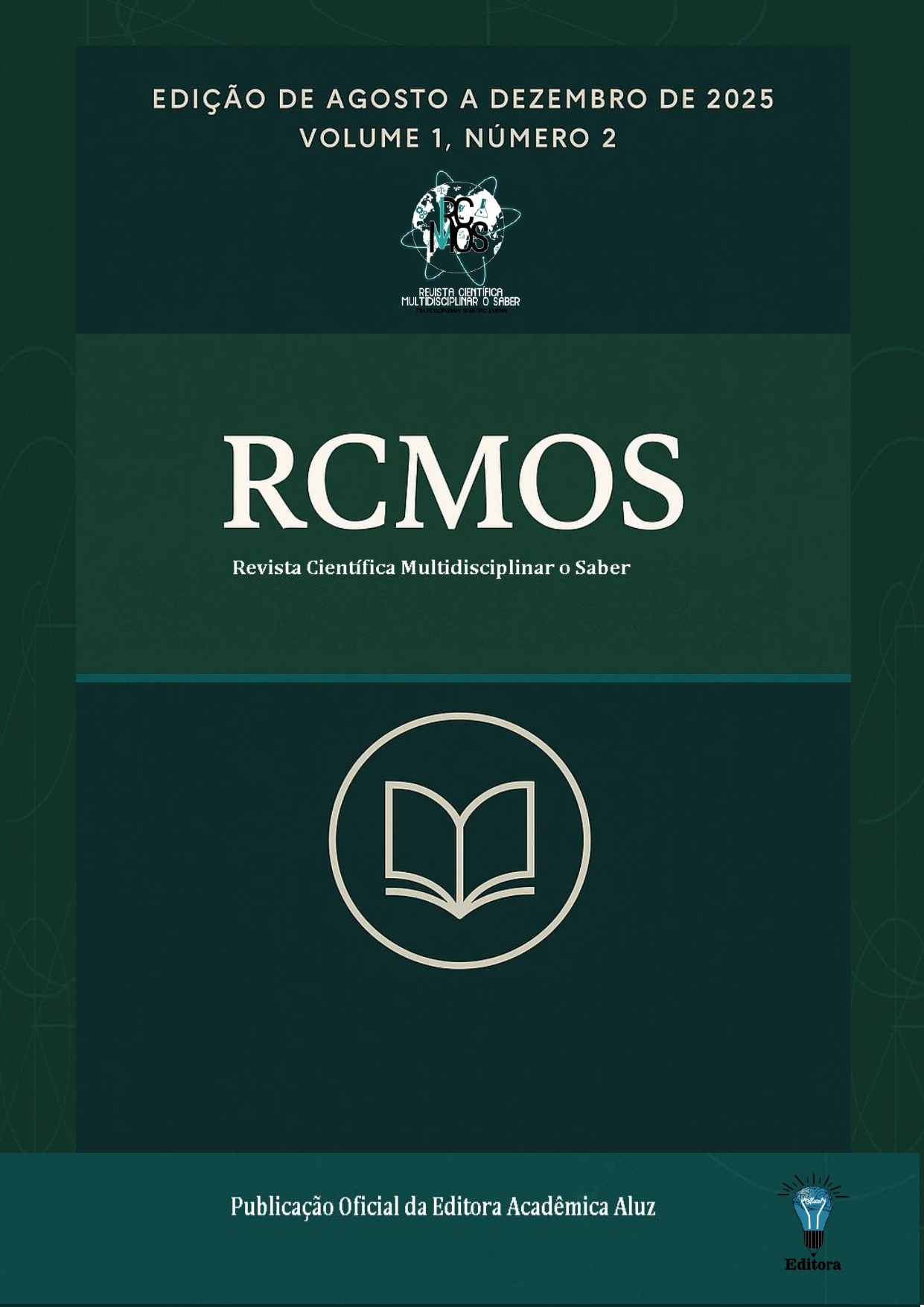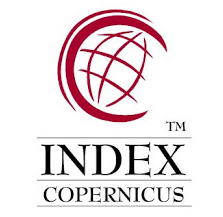Nanocompósitos estruturados de CNF utilizando CNC como agente de reforço mecânico
Nfc nanocomposites structureds using CNC as mechanical agent for reinforced strength properties
DOI:
https://doi.org/10.51473/rcmos.v1i2.2025.1278Palavras-chave:
Celulose nanocristalina, celulose nanofibrilada, nanocompósitos, nanofilmes.Resumo
O desenvolvimento de nanocompósitos que formem filmes a partir de celulose nanofibrilada (CNF) e nanocristalina (CNC) é uma alternativa sustentável para aplicação em inúmeros materiais industrializados, devido às suas características mecânicas e ópticas diferenciadas. O objetivo deste estudo foi avaliar o potencial da CNF e da CNC na produção de nanocompósitos transparentes de elevada resistência mecânica. Os nanocompósitos CNF-CNC foram produzidos de acordo com a técnica de casting, utilizando CNF como a matriz polimérica de dispersão para diferentes dosagens de CNC como reforço mecânico. A base polimérica utilizada de CNF empregou 10 g/m² dessa nanocelulose em sua forma suspensa, enquanto CNC foi aplicada nas doses de 3; 6; e 12 %, após sua suspensão em água. A adição de nanocristais de celulose permitiu a diminuição da rugosidade da superfície dos nanocompósitos produzidos. A tensão máxima de ruptura aumentou 103 e 287 %, para as aplicações de CNC de 3 e 12 %, respectivamente, enquanto o módulo de elasticidade aumentou 591 % para a dose dev12 % de CNC. A resistência à tração aumentou 61% com a adição de 12 % de CNC. Da mesma forma, as propriedades físicas de peso e volume específico aparente apresentaram ganhos significativos. A incorporação de CNC permitiu redução da opacidade em atév53 %, com consequentes ganhos de transparência dos nanocompósitos. Os nanocompósitos contendo CNC apresentaram maior estabilidade térmica, com menor perda de massa, que a referência contendo apenas CNF. A incorporação de CNC à base polimérica de CNF na formação de nanocompósitos de elevada resistência mecânica e transparência é uma alternativa tecnológica viável.
Downloads
Referências
ASTM. (2009). ASTM D 882-09 Standard test method for tensile properties of thin plastic sheeting. West Conshohocken, PA: ASTM International.
ABE, K.; YANO, H. Comparison of the characteristics of cellulose microfibril aggregates of wood, rice straw and potato tuber. Cellulose, v. 16, n. 6, p. 1017-1023, 2009. DOI: https://doi.org/10.1007/s10570-009-9334-9
BARDET, R.; BELGACEM, M. N.; BRAS, J. Different strategies for obtaining high opacity films of MFC with TiO2 pigments. Cellulose, v. 20, n. 6, p. 3025-3037, 2013. DOI: https://doi.org/10.1007/s10570-013-0025-1
CHUN, S.; LEE, S.; DOH, G.; LEE, S.; KIM, J. H. Preparation of ultrastrength nanopapers using cellulose nanofibrils. Journal of Industrial and Engineering Chemistry, v. 17, n. 13, p. 521-526, 2011. DOI: https://doi.org/10.1016/j.jiec.2010.10.022
DUFRESNE, A. Processing of polymer nanocomposites reinforced with polysaccharide
nanocrystals. Macromolecules, v. 15, p. 4111–4128, 2010. DOI: https://doi.org/10.3390/molecules15064111
ESPITIA, P. J. P., SOARES,N. F. F., TEÓFILO, R. F., COIMBRA, J. S. R., VITOR, D. M., BATISTA, R. A., FERREIRA, S. O., ANDRADE, N. J., MEDEIROS, E. A. A. Physical–mechanical and antimicrobial properties of nanocomposite films with pediocin and ZnO nanoparticles. Carbohyd Polym, 94:199-208, 2013. DOI: https://doi.org/10.1016/j.carbpol.2013.01.003
GEORGE, J.; SREEKALA, M. S.; THOMAS, S. A review on interface modification and characterization of natural fiber reinforced plastic composites. Polymer Engineering and Science, v. 41, n. 9, p. 1471–1485, 2001. DOI: https://doi.org/10.1002/pen.10846
HABIBI, Y.; LUCIA, L. A.; ROJAS, O. J. Cellulose nanocrystals: chemistry, self-assembly, and applications. Chemical Reviews, vol. 110, nº 6, p. 3479-3500, 2010. DOI: https://doi.org/10.1021/cr900339w
HASSAN, M. L.; MATHEW, A. P.; HASSAN, E. A.; EL-WAKIL, A. N.; OKSMAN, K. Nanofibers from bagasse and rice straw: process optimization and properties. Wood Sci Technol, v. 46, p. 193–205, 2012. DOI: https://doi.org/10.1007/s00226-010-0373-z
IWAMOTO, S.; NAKAGAITO, A. N.; YANO, H. Nano-fibrillation of pulp fibers for the processing of transparent nanocomposites. Applied Physics A, v. 89, n. 2, p. 461-466, 2007. DOI: https://doi.org/10.1007/s00339-007-4175-6
JOSHI, S. V.; DRZAL, L. T.; MOHANTY, A. K.; ARORA, S. Are natural fiber composites environmentally superior to glass fiber reinforced composites? Composite Part A, v. 35, p. 371–376, 2004. DOI: https://doi.org/10.1016/j.compositesa.2003.09.016
KHALIL, H. P. S. A.; DAVOUDPOUR, Y.; ISLAM, N.; MUSTAPHA, A.; SUDESH, K.; DUNGANI, R.; JAWAID, M. Production and modification of nanofibrillated cellulose using various mechanical processes: A review. Carbohydrate Polymers, v. 99, p. 649– 665, 2014. DOI: https://doi.org/10.1016/j.carbpol.2013.08.069
LI, X.; TABIL, L. G.; PANIGRAHI, S. D. Chemical treatments of natural fiber for use in natural fiber–reinforced composites: A review. Journal of Polymer Environment, v. 15, p. 25–33, 2007. DOI: https://doi.org/10.1007/s10924-006-0042-3
MANDAL, A.; CHAKRABARTY, D. Studies on the mechanical, thermal, morphological and barrier properties of nanocomposites based on poly(vinyl alcohol) and nanocellulose from sugarcane bagasse. Journal of Industrial and Engineering Chemistry, v. 20, p. 462–473, 2014. DOI: https://doi.org/10.1016/j.jiec.2013.05.003
MANOCHA, L. M.; VALAND, J.; PATEL, N.; WARRIER, A.; MANOCHA, S. Nanocomposites for structural applications. Indian Journal of Pure and Applied Physics, v. 44, p. 135–142, 2006. DOI: https://doi.org/10.1016/j.carbon.2005.08.012
NAKAGAITO, A.N.; FUJIMURA, A.; SAKAI, T.; HAMA, Y.; YANO, H. 2009. Production of microfibrillated cellulose (MFC)-reinforced polylactic acid (PLA) nanocomposites fromsheets obtained by a papermaking-like process. Compos Sci Technol 69:1293–7, 2009. DOI: https://doi.org/10.1016/j.compscitech.2009.03.004
NOGI, M. et al. Higth thermal stability of optical transparency in cellulose nanofiber paper. Applied Physics Letters, v. 102, n. 108, p. 102-106, 2013. DOI: https://doi.org/10.1063/1.4804361
PRINS, M. J.; PTASINSKI, K. J.; JANSSEN, F. J. J. G. Torrefaction of wood. Part 1.
Weight loss kinetics. Journal of Analytical and Applied Pyrolysis, v. 77, p. 28–34, 2006. DOI: https://doi.org/10.1016/j.jaap.2006.01.002
RAMAZANOV, M. A.; ALI-ZADE, R. A.; AGAKISHIEVA, P. B. Structure and magnetic properties of nanocomposites on the basis PE+Fe3O4 И PVDF+ Fe3O4. Digest Journal of Nanomaterials and Biostructures, v. 5, n. 3, p. 727–733, 2010.
RAAD, T.J.; PINHEIRO, P.C.C.; YOSHIDA, M.I. Equação geral de mecanismos cinéticos da carbonização do Eucalyptus spp. Cerne, Lavras, v. 12, n. 2, p. 93-106, 2006.
RANDRIAMANANTENA, T.; RAZAFINDRAMISA, F.L.; RAMANANTSIZEHENA, G.; BERNES, A.; LACABANE, C. Thermal behaviour of three woods of Madagascar by thermogravimetric analysis in inert atmosphere. In: Proceedings of the Fourth High-Energy Physics International Conference, 2009, Antananarivo, Madagascar.
SEYDIBEYOGLU, M. O.; OKSMAN, K. Novel nanocomposites based on polyurethane and microfibrillated cellulose. Composite Science and Technology, v. 68, p. 908–914, 2008. DOI: https://doi.org/10.1016/j.compscitech.2007.08.008
SIRÓ, I.; PLACKETT, D.; HEDENQVIST, M.; ANKERFORS, M.; LINDSTROM, T. Highly Transparent Films from Carboxymethylated Microfibrillated Cellulose: The Effect of Multiple Homogenization Steps on Key Properties. Journal of Applied Polymer Science, v. 119, n. 5, p. 2652–2660, 2011. DOI: https://doi.org/10.1002/app.32831
SIRÓ, I.; PLACKETT, D. Microfibrillated cellulose and new composite materials: a review. Cellulose, v. 17, n. 3, p. 459-464, 2010. DOI: https://doi.org/10.1007/s10570-010-9405-y
TAPPI standard (2006) T220 sp-06, Physical testing of pulp handsheets.
TAPPI standard (2006) T551 om-06, Thickness of paper and paperboard (Soft platen method).
TAPPI standard (2008) T410 om-08, Grammage of paper and paperboard (Weight per
unit area).
TAPPI standard (2007) T1214 sp-07, Interrelation of reflectance, R0; Reflectivity, R∞;
Opacity, C0.89; Scattering, s; and Absorption, k.
Technical association of the pulp and paper industry. Tappi standard methods. Atlanta: TAPPI, 2000.
TEIXEIRA, E. M.; CORRÊA, A. C.; MANZOLI, A.; LEITE, F. L.; OLIVEIRA, C. R.; MATTOSO, L. H. C.Cellulose nanofibers from white and naturally colored cotton fibers. Cellulose, v. 17, p. 595–606, 2010. DOI: https://doi.org/10.1007/s10570-010-9403-0
TONOLI, G.H.D.; TEIXEIRA, E.M.; CORRÊA, A.C.; MARCONCINI, J.M.; CAIXETA, L.A.; PEREIRA-DA-SILVA, M.A.; MATTOSO, L.H.C. Cellulose micro/nanofibres from Eucalyptus kraft pulp: Preparation and properties. Carbohydrate Polymers, v. 89, p. 80– 88, 2012. DOI: https://doi.org/10.1016/j.carbpol.2012.02.052
TUNC, S., & DUMAN, O. Preparation of active antimicrobial methyl cellulose/
carvacrol/montmorillonite nanocomposite films and investigation of carvacrol release. LWT - Food Science and Technology, 44(2), 465–472, 2011. DOI: https://doi.org/10.1016/j.lwt.2010.08.018
WANG, H.; LI, D.; ZHANG, R. Preparation of ultralong cellulose nanofibers and optically transparente nanopapers derived from waste corrugate paper pulp. BioResources, v. 8, n. 1, p. 1374-1384, 2013. DOI: https://doi.org/10.15376/biores.8.1.1374-1384
WANG, N.; DING, E.; CHENG, R. Thermal degradation behaviours of spherical cellulose nanocrystals with sulfate groups. Polymer, v. 48, p. 3486–3493, 2007. DOI: https://doi.org/10.1016/j.polymer.2007.03.062
YU, L.; DEAN, K.; LI, L. Polymer blends and composites from renewable resources. Prog. Polymer Sci., 31(6), 576-602, 2006. DOI: https://doi.org/10.1016/j.progpolymsci.2006.03.002
Downloads
Arquivos adicionais
Publicado
Edição
Seção
Categorias
Licença
Copyright (c) 2025 Renato Augusto Pereira Damásio, Cícero Pola, Fernando Jose Borges Gomes, Elenice Maia, Jorge Luiz Colodette (Autor)

Este trabalho está licenciado sob uma licença Creative Commons Attribution 4.0 International License.
Este trabalho está licenciado sob a Licença Creative Commons Atribuição 4.0 Internacional (CC BY 4.0). Isso significa que você tem a liberdade de:
- Compartilhar — copiar e redistribuir o material em qualquer meio ou formato.
- Adaptar — remixar, transformar e construir sobre o material para qualquer propósito, inclusive comercial.
O uso deste material está condicionado à atribuição apropriada ao(s) autor(es) original(is), fornecendo um link para a licença, e indicando se foram feitas alterações. A licença não exige permissão do autor ou da editora, desde que seguidas estas condições.
A logomarca da licença Creative Commons é exibida de maneira permanente no rodapé da revista.
Os direitos autorais do manuscrito podem ser retidos pelos autores sem restrições e solicitados a qualquer momento, mesmo após a publicação na revista.

















